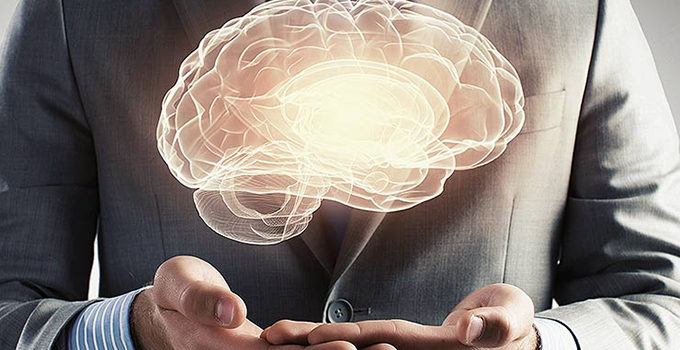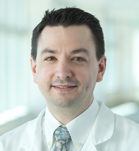

What is Deep Brain Stimulation (DBS) Surgery and How Can It Help?
by Jean-Philippe Langevin
By Providence Health Team
Deep brain stimulation (DBS) is a surgical procedure used to treat people suffering from disabling neurological symptoms like stiffness, rigidity, slowed movement or other walking problems caused by Parkinson’s disease, dystonia or essential tremor.
Deep brain stimulation surgery
During DBS surgery, surgeons implant a neurostimulator device under the skin in the upper chest and electrodes within certain areas of the brain. A wire that connects the device to the electrodes is also implanted under the skin. Sometimes referred to as a brain pacemaker, the neurostimulator sends signals to the electrodes to modify or block the activity of specific brain regions.
DBS allows surgeons to directly and precisely interact with brain tissue. Unlike the name suggests, the procedure only requires a few small incisions and patients usually return home after a one-day admission. Although the surgery takes a few hours, the patient remains awake to test the device for accuracy and effectiveness. For this reason, an anesthesiologist is also on hand to ensure patients stay comfortable.
Types of disorders
DBS also received a humanitarian exemption approval from the FDA for the treatment of severe obsessive-compulsive disorder (OCD). “I remember a patient suffering from severe OCD. The patient had such a strong fear of contamination that she was unable to leave the house and, as a result, she was living with her parents,” says Dr. Jean-Philippe Langevin, director, Restorative Neurosurgery and Deep Brain Stimulation program. “When treating patients like this, we believe they get more out of life after the therapy because they can experience and control a wider range of emotions.”
Risks and rewards
Treatments following DBS surgery are often transformative, rewarding and have the ability to positively alter the course of many neurological symptoms by improving symptoms and quality of life.
Another important benefit of DBS is that while it is transformative, it doesn’t fundamentally change the character of the patient. In the case of psychiatric conditions, DBS appears to indirectly treat the disease by allowing the brain to recover on its own and with psychotherapy. Patients will often report that DBS has opened up a lot of possibilities in their life.
As with any surgery or procedure, however, there are risks. These risks might include infections, headaches, brain hemorrhages, strokes, seizures, or confusion. Fortunately, DBS has a very low occurrence of adverse effects and the majority of complications are treatable without causing permanent damage. Overall, DBS is a safe, effective therapeutic option for patients suffering from movement disorders.
Patient selection
More than 100,000 patients with Parkinson’s disease or essential tremor have been successfully treated with DBS surgery since the Food and Drug Administration first approved the device in 1997. The patients who tend to experience the most benefit from DBS therapy are those that suffer from symptoms that used to respond well to medication but where medical therapy is no longer sufficient to control the disability. For instance, medication tends to wear off in between doses leaving patients disabled during those off-times. For these patients, DBS helps significantly reduce uncontrolled movements between doses, allowing them to perform activities like eating, drinking, and engaging in social activities or hobbies.
Results
The timing of therapeutic response differs because it is dependent on three factors: the specific disease or disorder, the location of the electrode (i.e., the brain target), and device programming.
Soon after the device is implanted, tremors and movement disorders associated with Parkinson’s disease can start improving. Those suffering from OCD and dystonia can expect a three-to-six-month adjustment period before experiencing the optimal effect of DBS.
For the first several months following device implantation, the clinician will make frequent adjustments to ‘fine-tune’ the therapy until they achieve the best possible results. This fine-tuning allows for more control over symptoms over time.
Do you have a personal experience (yourself or a loved one) with DBS surgery? If you have questions or would like to learn more, visit the Pacific Movement Disorders Center. We are located at Providence Saint John’s Health Center in Santa Monica and Providence Little Company of Mary Medical Center in Torrance.
Original article published June 16, 2017 in Providence.org/blog.
About the Author

Jean-Philippe Langevin
Dr. Jean-Philippe Langevin is a board-certified and fellowship-trained neurosurgeon specializing in the surgical treatment of movement disorders, epilepsy and psychiatric conditions. As Director of the Restorative Neurosurgery and Deep Brain Stimulation at the Pacific Movement Disorders Center, he has extensive experience using neuromodulation to treat conditions such as Parkinson’s disease, essential tremor, dystonia, epilepsy and obsessive-compulsive disorder (OCD). He employs a variety of treatment modalities including deep brain stimulation (DBS), vagal nerve stimulation (VNS) and interstitial laser ablation.
Last updated: August 2nd, 2019